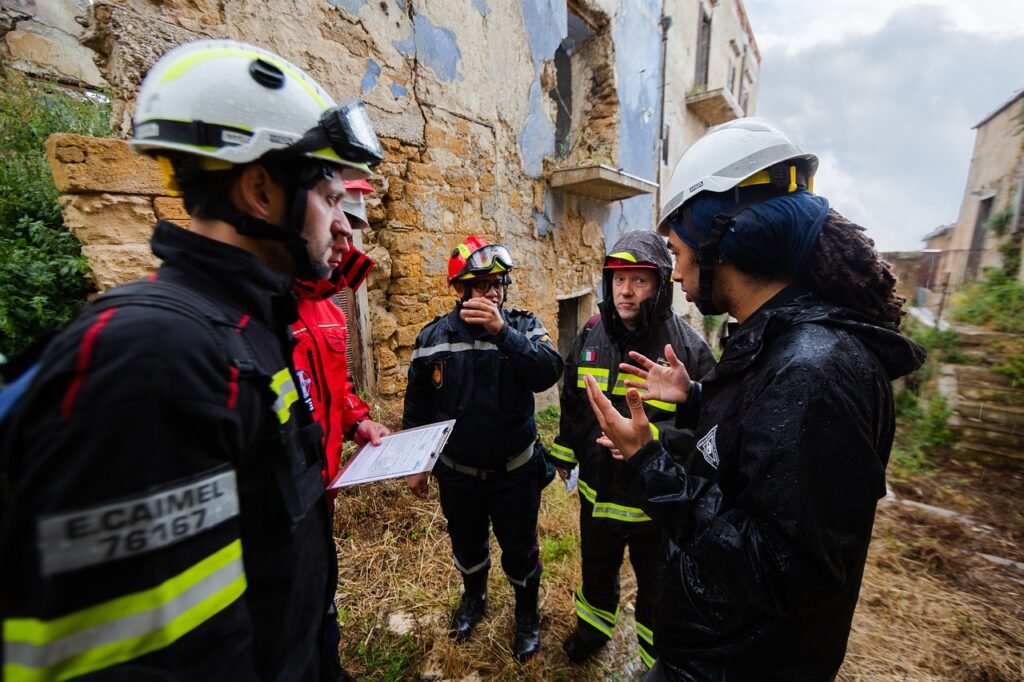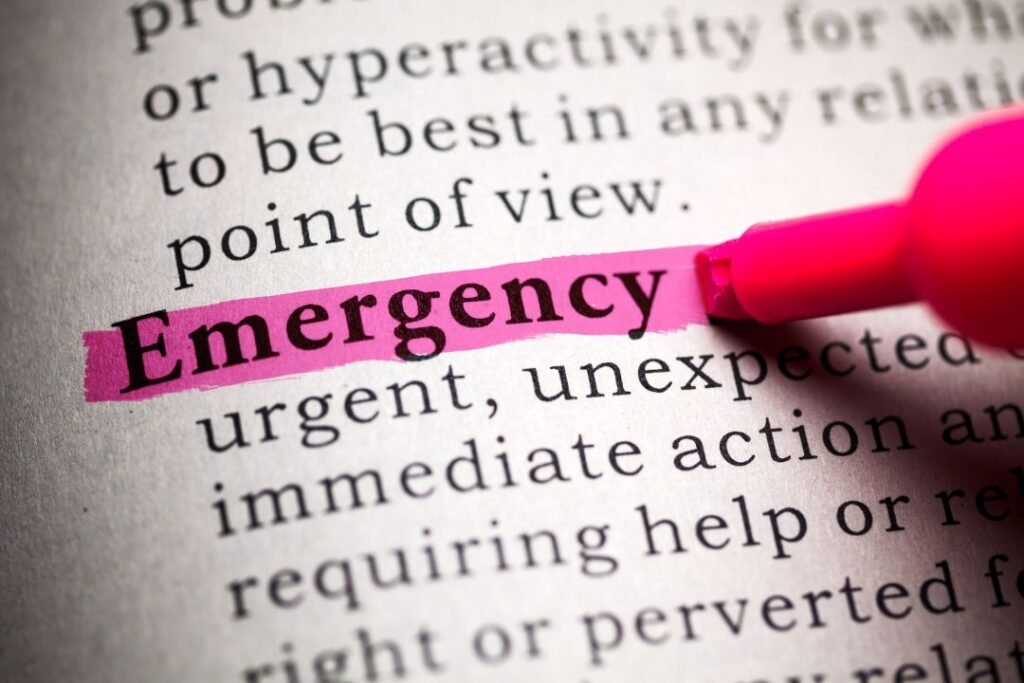In the face of unexpected disasters and crises, maintaining personal hygiene becomes not just a matter of comfort but also of survival.
Whether it’s a natural disaster, a pandemic, or any other emergency situation, the significance of personal hygiene cannot be overstated.
In such times, access to clean water, sanitation facilities, and hygiene products may become limited or entirely unavailable, posing serious health risks.
This article aims to shed light on the crucial role of personal hygiene in emergency situations, offering insights into sanitation practices and essential supplies necessary for maintaining cleanliness and health during challenging times.
Table of Contents
Understanding Emergency Situations


Types of Emergencies
- Natural Disasters: Natural disasters such as hurricanes, earthquakes, wildfires, floods, and tsunamis are sudden and often catastrophic events that can cause widespread damage to infrastructure and disrupt normal life. In the aftermath of these disasters, access to clean water, sanitation facilities, and hygiene resources may be severely limited, increasing the risk of waterborne diseases and other health hazards.
- Pandemics and Health Emergencies: Pandemics, such as the outbreak of infectious diseases like influenza or COVID-19, pose unique challenges to personal hygiene and public health. Containment measures such as lockdowns, quarantines, and social distancing can impact access to sanitation facilities and essential hygiene products, necessitating adaptive strategies to maintain cleanliness and prevent the spread of illness.
- Humanitarian Crises: Humanitarian crises resulting from conflicts, displacement, and refugee situations also present significant challenges to personal hygiene. Overcrowded living conditions, inadequate sanitation infrastructure, and limited access to clean water can create breeding grounds for disease transmission, highlighting the importance of hygiene promotion and interventions in emergency settings.
Challenges to Personal Hygiene in Emergency Situations
- Limited Access to Clean Water: One of the primary challenges in emergency situations is the scarcity of clean water for drinking, cooking, and hygiene purposes. Contaminated water sources can lead to waterborne diseases such as cholera, diarrhea, and dysentery, making safe water procurement and purification essential for maintaining personal hygiene.
- Sanitation Infrastructure Damage: Damage to sanitation infrastructure, including toilets, sewage systems, and wastewater treatment plants, can exacerbate hygiene concerns during emergencies. Lack of proper sanitation facilities increases the risk of fecal-oral transmission of pathogens and contributes to environmental contamination, necessitating alternative sanitation solutions and waste management strategies.
- Limited Access to Hygiene Products: Disruption to supply chains and logistical challenges may result in shortages of essential hygiene products such as soap, hand sanitizer, and sanitary items. In resource-constrained settings, improvised alternatives or locally sourced materials may need to be utilized to ensure basic hygiene practices are upheld.
- Psychological Stress and Trauma: Emergency situations often entail significant psychological stress and trauma, which can impact individuals’ ability to maintain personal hygiene. Fear, anxiety, and uncertainty may hinder adherence to hygiene practices, underscoring the importance of addressing mental and emotional well-being alongside physical health concerns.
By understanding the nature of different emergency scenarios and the specific challenges they present to personal hygiene, individuals and communities can better prepare for and respond to crisis situations, mitigating risks and safeguarding health outcomes.
Sanitation Practices


Importance of Sanitation in Preventing Illness
In emergency situations, maintaining proper sanitation practices is crucial for preventing the spread of illness and disease.
Contaminated water, inadequate waste disposal, and poor personal hygiene can lead to outbreaks of waterborne and communicable diseases, exacerbating the impact of the crisis.
By prioritizing sanitation measures, individuals and communities can mitigate health risks and protect themselves from preventable illnesses.
Basic Sanitation Practices to Follow in Emergencies
- Hand Hygiene: Proper hand hygiene, including regular handwashing with soap and water or using alcohol-based hand sanitizers, is essential for preventing the transmission of pathogens. Individuals should wash their hands before and after handling food, after using the toilet, and after any activities that may involve exposure to contaminants.
- Safe Water and Food Handling: Ensuring the safety of water and food supplies is paramount in emergency settings. Water should be obtained from clean and reliable sources and, if necessary, treated through filtration, boiling, or chemical disinfection methods. Similarly, food should be properly cooked, stored, and handled to prevent contamination and foodborne illnesses.
- Waste Disposal: Proper waste disposal practices help prevent environmental pollution and the spread of disease. Individuals should dispose of waste in designated areas or containers, avoiding open defecation and littering. In situations where formal waste disposal systems are unavailable, improvised methods such as burying or burning waste may be necessary.
- Personal Grooming: Maintaining personal hygiene extends beyond handwashing to include practices such as bathing, oral care, and grooming. Cleanliness of the body, hair, and clothing helps prevent the accumulation of dirt, bacteria, and odors, promoting overall well-being and self-esteem.
Advanced Sanitation Practices for Prolonged Emergencies
- Setting up Sanitation Stations: In prolonged emergency situations, establishing designated sanitation stations can help maintain hygiene standards within communities. These stations may include handwashing stations equipped with soap and water, communal toilets or latrines, and waste disposal facilities.
- Creating Makeshift Toilets: In areas where access to conventional sanitation infrastructure is limited, creating makeshift toilets or latrines can provide essential sanitation facilities. Simple pit latrines can be dug and covered when full, with proper measures taken to ensure hygienic waste management and prevent contamination of groundwater sources.
- Disinfection Techniques: Regular disinfection of surfaces, equipment, and communal facilities is critical for reducing the risk of disease transmission. Using appropriate disinfectants and following recommended procedures for cleaning and disinfection can help maintain a sanitary environment and minimize the spread of pathogens.
By adopting basic and advanced sanitation practices tailored to the specific challenges of emergency situations, individuals and communities can safeguard their health and well-being, even in the midst of crisis.
Prioritizing sanitation not only reduces the risk of illness but also contributes to resilience and recovery efforts in the aftermath of emergencies.
Essential Supplies for Personal Hygiene
Water and Water Purification Methods

- Water: Access to clean water is fundamental for maintaining personal hygiene in emergency situations. Individuals should ensure they have an adequate supply of drinking water stored in safe containers. The general recommendation is to store at least one gallon of water per person per day for drinking and sanitation purposes.
- Water Purification Methods: In cases where clean water is scarce or unavailable, water purification methods become essential. Boiling water is one of the most effective methods for killing pathogens, but alternative methods such as chemical disinfection (using chlorine or iodine tablets) or filtration (using portable water filters) can also be used to make water safe for drinking and hygiene purposes.
Hygiene Kits and Their Contents
- Hygiene Kits: Hygiene kits are pre-packaged sets of essential hygiene supplies designed to meet the basic needs of individuals or families during emergencies. These kits typically contain items such as:
- Soap or liquid hand sanitizer
- Toothpaste and toothbrushes
- Toilet paper or sanitary wipes
- Feminine hygiene products
- Disposable gloves
- Disposable face masks
- Basic first aid supplies (bandages, antiseptic wipes, etc.)
- Customization: While pre-assembled hygiene kits are convenient, individuals may also choose to customize their kits based on their specific needs and preferences. This may include adding items such as prescription medications, baby wipes, diapers, or specialized hygiene products for individuals with specific health conditions.
Other Necessary Supplies
- Soap and Disinfectants: Soap is a basic yet indispensable hygiene product for handwashing and general cleanliness. In emergency situations, individuals should stockpile an ample supply of soap, either in bar or liquid form. Additionally, disinfectants such as bleach or household disinfectant sprays can be used to sanitize surfaces and equipment.
- Toilet Paper and Sanitary Items: Adequate provision of toilet paper or alternative sanitary items is essential for maintaining personal hygiene, particularly in settings where access to toilets or sanitation facilities may be limited. Individuals should ensure they have enough supplies to last throughout the duration of the emergency.
DIY Alternatives for Hygiene Products
- Homemade Sanitizers: In situations where commercial hand sanitizers are unavailable, individuals can create their own hand sanitizers using readily available ingredients such as isopropyl alcohol (rubbing alcohol) and aloe vera gel. Recipes for homemade sanitizers can be found online and should adhere to recommended guidelines for effective disinfection.
- Natural Hygiene Alternatives: In resource-constrained environments, individuals may also explore natural alternatives for personal hygiene, such as using plant-based cleansers, herbal remedies, or traditional hygiene practices. While these methods may not offer the same level of efficacy as commercial products, they can still contribute to maintaining cleanliness and hygiene in emergency situations.
By ensuring access to essential hygiene supplies and exploring alternative solutions when necessary, individuals can better prepare themselves to maintain personal hygiene and mitigate health risks during emergencies.
Having a well-stocked hygiene kit and the knowledge to improvise with available resources enhances resilience and self-reliance in challenging circumstances.
Mental and Emotional Hygiene


Addressing the Psychological Impact of Emergencies on Personal Hygiene
- Understanding Psychological Stress: Emergency situations often entail significant psychological stressors, including fear, anxiety, uncertainty, and grief. These stressors can affect individuals’ ability to prioritize and maintain personal hygiene practices. Understanding the psychological impact of emergencies is essential for addressing both the physical and emotional aspects of hygiene.
- Impact on Hygiene Behavior: Psychological distress can manifest in various ways that impact hygiene behavior. For example, individuals may experience heightened anxiety about cleanliness, leading to excessive handwashing or hygiene rituals. Conversely, feelings of despair or hopelessness may result in the neglect of personal hygiene practices altogether.
Coping Strategies for Maintaining Personal Hygiene Amidst Stress and Uncertainty
- Stress Management Techniques: Implementing stress management techniques can help individuals cope with the psychological challenges of emergencies and maintain their hygiene routines. This may include practices such as deep breathing exercises, mindfulness meditation, yoga, or engaging in hobbies and activities that provide a sense of calm and distraction.
- Establishing Routines: Establishing daily routines, including regular hygiene practices, can provide structure and stability amidst chaos and uncertainty. Setting aside specific times for activities such as handwashing, bathing, and grooming can help reinforce hygiene habits and promote a sense of normalcy during crises.
- Seeking Social Support: Maintaining social connections and seeking support from friends, family, or mental health professionals can provide emotional support and encouragement to prioritize personal hygiene. Sharing experiences and concerns with others can reduce feelings of isolation and help individuals navigate the challenges of emergencies more effectively.
- Self-Care Practices: Practicing self-care is essential for preserving mental and emotional well-being during emergencies. This may involve engaging in activities that promote relaxation and self-soothing, such as taking warm baths, practicing self-massage, or enjoying comforting foods and beverages.
- Limiting Exposure to Stressors: Minimizing exposure to stressors, such as media coverage of the emergency or negative social interactions, can help reduce psychological distress and support efforts to maintain personal hygiene. Setting boundaries around media consumption and focusing on positive and uplifting content can contribute to a healthier mindset.
By acknowledging the psychological impact of emergencies and implementing coping strategies to address stress and uncertainty, individuals can better maintain their personal hygiene and overall well-being during challenging times.
Prioritizing mental and emotional hygiene alongside physical hygiene is essential for resilience and recovery in the face of adversity.
Community Hygiene Efforts

Importance of Collective Hygiene Efforts in Emergency Settings
- Collaborative Approach: In emergency situations, promoting hygiene at the community level is essential for protecting public health and preventing the spread of diseases. A collaborative approach that involves individuals, families, communities, local authorities, and humanitarian organizations is necessary to address hygiene challenges effectively.
- Public Health Impact: Community hygiene efforts have a significant impact on public health outcomes during emergencies. By collectively adopting and enforcing hygiene practices, communities can reduce the risk of disease transmission, minimize the burden on healthcare systems, and facilitate faster recovery and resilience.
Collaborative Approaches to Sanitation and Hygiene within Communities
- Community Mobilization: Mobilizing community members to take ownership of hygiene initiatives fosters a sense of collective responsibility and empowerment. Community leaders, volunteers, and local organizations can play a crucial role in organizing hygiene campaigns, disseminating information, and coordinating resources.
- Hygiene Promotion Programs: Implementing hygiene promotion programs that target specific community needs and cultural norms can enhance awareness and behavior change. These programs may include educational workshops, demonstrations, and interactive activities that engage community members in learning about and practicing proper hygiene.
- Distribution of Hygiene Supplies: Ensuring equitable access to hygiene supplies within communities is essential for promoting hygiene behaviors. Local authorities and humanitarian organizations can facilitate the distribution of hygiene kits, sanitation materials, and clean water sources to underserved populations, including vulnerable groups such as children, the elderly, and people with disabilities.
Engaging with Local Authorities and Organizations for Support
- Coordination and Collaboration: Collaborating with local authorities, government agencies, and non-governmental organizations (NGOs) strengthens community hygiene efforts and facilitates resource mobilization. Establishing partnerships with relevant stakeholders allows for coordinated planning, implementation, and monitoring of hygiene interventions.
- Capacity Building: Building the capacity of local authorities and community organizations to respond to hygiene needs enhances resilience and sustainability. Training programs, technical assistance, and resource-sharing initiatives enable communities to develop and maintain their hygiene infrastructure, emergency preparedness, and response capabilities.
- Advocacy and Policy Support: Advocating for policies and regulations that prioritize hygiene and sanitation in emergency planning and response frameworks is essential for fostering systemic change. Engaging policymakers, advocating for budget allocations, and raising awareness about the importance of hygiene can drive policy reform and institutionalize hygiene practices within communities.
By fostering a culture of collaboration, empowerment, and accountability, communities can effectively address hygiene challenges and promote resilience in the face of emergencies.
Engaging with local authorities, mobilizing resources, and prioritizing hygiene at the community level are critical steps toward safeguarding public health and well-being during crises.
Case Studies and Examples


Real-life Examples of Personal Hygiene Challenges in Emergency Situations
- Hurricane Katrina: The aftermath of Hurricane Katrina in 2005 highlighted significant challenges in maintaining personal hygiene in emergency shelters and displaced communities. Limited access to clean water, sanitation facilities, and hygiene supplies contributed to outbreaks of waterborne illnesses and exacerbated health disparities among vulnerable populations.
- Ebola Outbreak in West Africa: During the Ebola outbreak in West Africa from 2014 to 2016, effective hygiene practices played a critical role in controlling the spread of the virus. Communities implemented rigorous hand hygiene protocols, established quarantine measures, and promoted safe burial practices to minimize transmission risks and prevent secondary infections.
Success Stories and Lessons Learned from Past Emergencies
- Haiti Earthquake Response: Following the 2010 earthquake in Haiti, international aid organizations and local partners collaborated to provide emergency hygiene kits, water purification tablets, and sanitation facilities to affected communities. Hygiene promotion campaigns emphasized the importance of handwashing and safe water practices, contributing to disease prevention efforts.
- Typhoon Haiyan in the Philippines: In the aftermath of Typhoon Haiyan in 2013, community-led initiatives and government interventions focused on restoring access to clean water and sanitation services in affected areas. Hygiene education programs, distribution of hygiene kits, and rehabilitation of water infrastructure helped mitigate health risks and promote recovery.
Lessons Learned and Best Practices
- Early Preparedness and Response: Early preparedness and proactive response measures are critical for addressing hygiene challenges in emergency situations. Pre-positioning hygiene supplies, conducting risk assessments, and engaging communities in preparedness activities can enhance resilience and mitigate the impact of disasters.
- Community Engagement and Empowerment: Community engagement and empowerment are key drivers of successful hygiene interventions in emergencies. Involving local stakeholders in decision-making processes, leveraging existing social networks, and tailoring interventions to cultural contexts foster ownership and sustainability.
- Integration of Mental and Emotional Hygiene: Recognizing the interconnectedness of mental, emotional, and physical health is essential for comprehensive emergency response efforts. Integrating psychosocial support services, promoting self-care practices, and addressing stigma around mental health contribute to holistic well-being and resilience.
By examining real-life examples, success stories, and lessons learned from past emergencies, communities and organizations can glean valuable insights into effective strategies for addressing hygiene challenges and promoting resilience in the face of adversity.
Sharing knowledge, best practices, and innovative approaches strengthens preparedness efforts and enhances collective capacity to respond to future emergencies.
Conclusion


In times of crisis, personal hygiene becomes a cornerstone of health and well-being, playing a pivotal role in preventing illness and promoting resilience.
Throughout this article, we’ve explored various aspects of personal hygiene in emergency situations, highlighting key practices, essential supplies, and community efforts aimed at safeguarding health outcomes.
- Understanding Emergency Situations: We began by examining the different types of emergencies and the unique challenges they pose to personal hygiene. From natural disasters to pandemics and humanitarian crises, each emergency scenario requires tailored approaches to sanitation and hygiene.
- Sanitation Practices: We discussed the importance of sanitation in preventing illness and outlined basic and advanced hygiene practices for emergency settings. From hand hygiene to waste disposal and disinfection techniques, adopting proper sanitation measures is crucial for reducing disease transmission risks.
- Essential Supplies for Personal Hygiene: Access to clean water, hygiene kits, soap, and other essential supplies is indispensable for maintaining personal hygiene during emergencies. By ensuring preparedness and exploring DIY alternatives when necessary, individuals can mitigate health risks and promote self-reliance.
- Mental and Emotional Hygiene: We emphasized the importance of addressing the psychological impact of emergencies on personal hygiene. Coping strategies, stress management techniques, and self-care practices are essential for preserving mental and emotional well-being amidst stress and uncertainty.
- Community Hygiene Efforts: Finally, we explored the significance of collective hygiene efforts at the community level. Collaborative approaches, community mobilization, and engagement with local authorities are key to promoting hygiene, building resilience, and fostering recovery in emergency settings.
As we conclude, it’s essential to recognize that personal hygiene in emergencies is not just a matter of individual responsibility but a collective endeavor.
By prioritizing hygiene preparedness, supporting community initiatives, and advocating for policy reform, we can enhance our resilience and ability to respond effectively to future crises.

